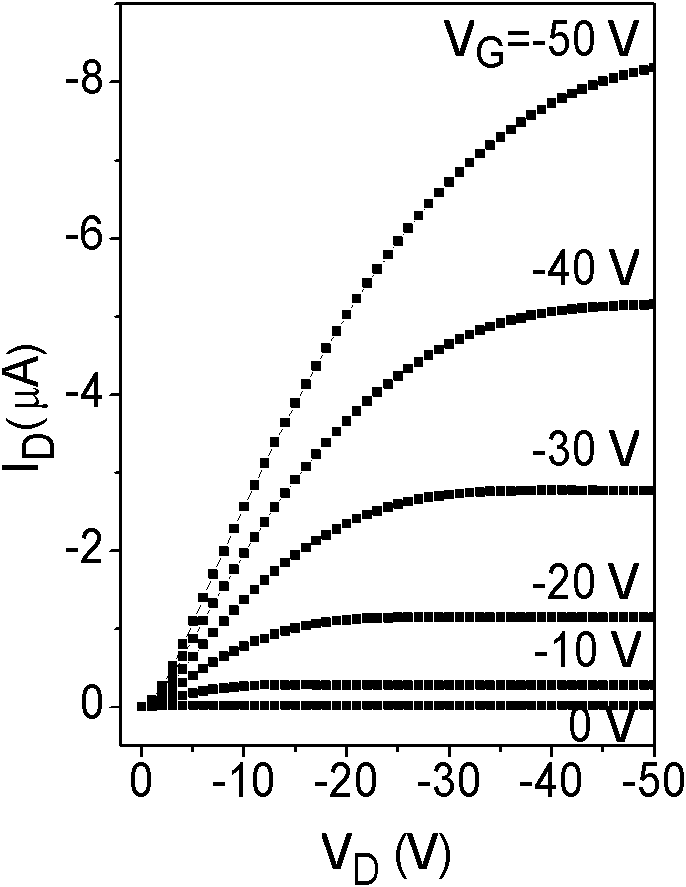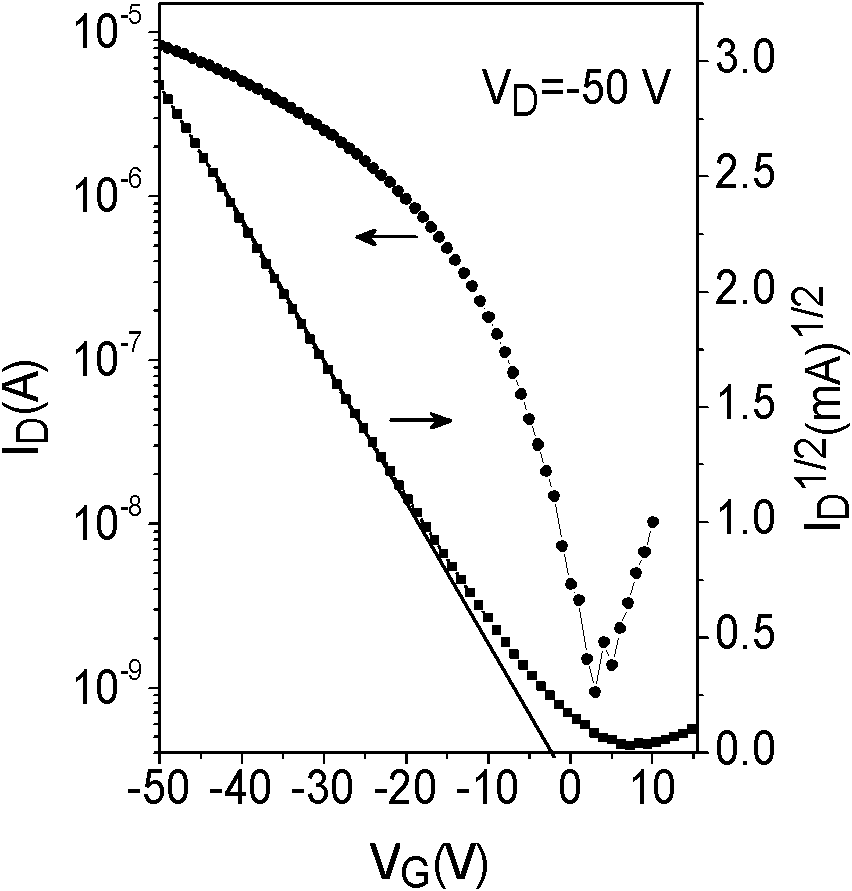Polymer semiconducting material and organic thin film transistor
A polymer and semiconductor technology, applied in semiconductor devices, semiconductor/solid-state device manufacturing, organic chemistry, etc., can solve the problems of limiting the application of polymer semiconductor materials and poor solubility of polymer semiconductor materials, so as to improve the degree of conjugation and high The effect of mobility
- Summary
- Abstract
- Description
- Claims
- Application Information
AI Technical Summary
Problems solved by technology
Method used
Image
Examples
preparation example Construction
[0083] I. Preparation of polymerized monomers
[0084] (1) Preparation of 2,5-dibromo-3,4-dialkylthiophene:
[0085] Prepared according to the method provided in the literature (Chem. Eur. J., 2004, 3331-3340), the reaction equation is as follows.
[0086] First prepare 3,4-dialkylthiophene: use 3 times the molar amount of magnesium chips, 2.8 times the molar amount of 1-bromoalkane as raw material, diethyl ether as solvent, and the concentration of the reaction system is 2 mol / liter to prepare alkyl bromide Magnesium chloride solution; under anhydrous and anaerobic conditions, add commercially available 1 times molar amount of 3,4-dibromothiophene, 3% molar amount of Ni(dppp) to another reaction flask equipped with a constant pressure dropping funnel Cl 2 and diethyl ether (the concentration of the reaction system is 0.75 mol / liter), introduce the prepared Grignard reagent into a constant pressure dropping funnel, heat to slightly boiled reaction for 12 hours after the addi...
Embodiment 1
[0110] Embodiment 1: the synthesis of N-dodecyl-2,7-dibromo-3,6-diiodocarbazole
[0111] Heat the mixture of 10mmol N-dodecyl-2,7-dibromocarbazole (4.93g) and 100ml glacial acetic acid to 80°C, the solid dissolves, and add 26.7mmol KI (4.43g) and 13.3mmolKIO in one go 3 (2.85g), after stirring at 80°C for 6 hours, pour it into water, extract with dichloromethane, wash with saturated brine, dry over anhydrous magnesium sulfate, remove the solvent, and recrystallize with acetone to obtain 5.20g of white solid, namely N-dodecyl-2,7-dibromo-3,6-diiodocarbazole, yield: 70.1%, structural characterization data are as follows: 1 H NMR (300MHz, CDCl 3 ): δ (ppm) 8.46 (s, 2H), 7.68 (s, 2H), 4.14 (t, 2H, J=7.2Hz), 1.79-1.83 (m, 2H), 1.24-1.32 (m, 18H), 0.88(t, 3H, J=6.3Hz). Elemental analysis (C 24 h 29 Br 2 I 2 N (%)): Calculated: C, 38.69; H, 3.92; N, 1.88. Measured: C, 38.50; H, 3.80; N, 1.82.
Embodiment 2
[0112] Example 2: Synthesis of N-dodecyl-2,7-dibromo-3,6-bis(trimethylsilylacetylene)carbazole
[0113] Under argon atmosphere, to compound 16.0mmol N-dodecyl-2,7-dibromo-3,6-diiodocarbazole (11.9g), 224mg bis(triphenylphosphine)palladium dichloride (Pd (PPh 3 ) 2 Cl 2 ), 60.9mg cuprous iodide (CuI), 32.7mmol trimethylsilylacetylene (3.20g) was slowly added dropwise to a mixture of 80ml tetrahydrofuran and 80ml triethylamine, stirred at room temperature for 48 hours, washed with ethyl acetate, collected organic phase, washed the organic phase twice with saturated ammonium chloride solution and saturated brine respectively, dried over anhydrous magnesium sulfate, removed the solvent, and purified by silica gel column chromatography. The eluent was 1 / 4 dichloromethane / petroleum by volume Ether, 6.18g of solid was obtained, that is, N-dodecyl-2,7-dibromo-3,6-bis(trimethylsilylacetylene)carbazole, the yield: 56.4%, and the structural characterization data are as follows: 1 H N...
PUM
| Property | Measurement | Unit |
|---|---|---|
| thickness | aaaaa | aaaaa |
| thickness | aaaaa | aaaaa |
Abstract
Description
Claims
Application Information
 Login to View More
Login to View More - R&D
- Intellectual Property
- Life Sciences
- Materials
- Tech Scout
- Unparalleled Data Quality
- Higher Quality Content
- 60% Fewer Hallucinations
Browse by: Latest US Patents, China's latest patents, Technical Efficacy Thesaurus, Application Domain, Technology Topic, Popular Technical Reports.
© 2025 PatSnap. All rights reserved.Legal|Privacy policy|Modern Slavery Act Transparency Statement|Sitemap|About US| Contact US: help@patsnap.com



